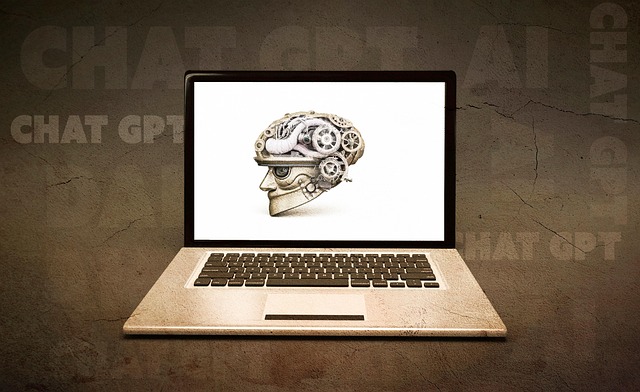In the competitive world of e-commerce, an AI chatbot is no longer a futuristic concept but an essential tool. It offers instant support, personalized product recommendations, and guidance throughout the checkout process, leveraging NLP and Machine Learning to adapt to individual preferences. Building such a chatbot involves strategic tool selection, with pre-trained language models from OpenAI or Google Cloud AI saving time and costs. Designing effective conversational flows, training with diverse datasets, and regular updates ensure accurate, relevant responses. Seamless implementation, rigorous testing, and continuous iteration improve user experience and drive sales conversions.
Building a Generative AI Chatbot for your ecommerce platform can enhance customer interactions and drive sales. This comprehensive guide walks you through the process, from understanding unique ecommerce AI chatbot needs and setting clear goals to selecting the right tools and technologies. Learn how to design effective conversational flows, curate high-quality training data, and implement, test, and iterate your chatbot for optimal performance. Master these steps to create an engaging ecommerce AI chatbot that delivers exceptional customer experiences.
- Understanding Ecommerce AI Chatbot Needs and Goals
- Choosing the Right Tools and Technologies
- Designing Conversational Flows and Training Data
- Implementing, Testing, and Iterating Your Ecommerce AI Chatbot
Understanding Ecommerce AI Chatbot Needs and Goals

In the realm of ecommerce, an AI chatbot is no longer a futuristic concept but a necessity. Understanding the unique needs and goals of this specific domain is paramount when building such an application. An ecommerce AI chatbot must serve as an extension of the online store’s customer service, providing instant support, answering product queries, offering personalized recommendations, and guiding users through the checkout process. It should aim to enhance user experience, drive sales conversions, and foster a sense of trust in the brand.
The chatbot’s capabilities should align with common ecommerce scenarios: handling basic product inquiries, understanding natural language requests for specific items, suggesting relevant products based on browsing history or past purchases, and providing post-purchase assistance. By integrating advanced Natural Language Processing (NLP) and Machine Learning algorithms, the chatbot can learn from user interactions, adapt to individual preferences, and continuously improve its performance. This tailored approach ensures that the ecommerce AI chatbot becomes a powerful tool for engaging customers and boosting sales in this competitive digital landscape.
Choosing the Right Tools and Technologies

When building an eCommerce AI chatbot, selecting the appropriate tools and technologies is a strategic step that forms the foundation for your project’s success. The right choice depends on various factors, including the chatbot’s intended purpose, scale, and desired level of customization. For instance, consider leveraging pre-trained language models offered by leading tech giants like OpenAI or Google Cloud AI, which provide robust capabilities for natural language understanding and generation.
These models can significantly reduce development time and cost, making them ideal for many eCommerce applications, such as product recommendations or customer support. Additionally, integrating a suitable development platform is essential; options range from high-level, user-friendly interfaces like Dialogflow (by Google) to more technical frameworks like Rasa or Microsoft Bot Framework, offering greater flexibility for complex chatbot architectures.
Designing Conversational Flows and Training Data

Designing the conversational flow is a critical aspect of building an effective Ecommerce AI Chatbot. It involves mapping out how the chatbot will interact with users, from initial greetings to handling complex queries about products and payments. A well-designed flow ensures that conversations are natural, intuitive, and lead to desired outcomes like conversions or customer support. This process includes scripting key exchanges, defining branching paths based on user inputs, and setting up fallback responses for unexpected scenarios.
Training data plays a pivotal role in shaping the chatbot’s performance. High-quality, diverse datasets containing real-world customer interactions are essential. For an Ecommerce AI Chatbot, this could include historical chat logs, product descriptions, FAQs, and even social media conversations related to the store’s offerings. The quality of training data directly impacts the chatbot’s ability to understand context, generate relevant responses, and adapt to various user personas. Regular updates and refinements using new data are crucial to keep the chatbot current and accurate.
Implementing, Testing, and Iterating Your Ecommerce AI Chatbot

After building your ecommerce AI chatbot, the next crucial steps are implementing, testing, and iterating. Implementation involves seamlessly integrating your chatbot into your existing ecommerce platform. Ensure it appears in relevant places like product pages, checkout processes, or customer support sections for easy access by shoppers. During testing, you’ll want to simulate various user scenarios to identify any bugs or areas of improvement. Use tools that allow for detailed analytics on chatbot interactions, enabling you to measure performance and user satisfaction.
Iterating your ecommerce AI chatbot based on the insights gained from testing is essential for continuous enhancement. Regularly update and refine its responses, ensuring they remain accurate and helpful. Incorporate new features or adjust existing ones based on customer feedback and interaction patterns. This ongoing process optimizes the chatbot’s performance, making it a valuable addition to your ecommerce platform that enhances user experience and drives conversions.
Building a generative AI chatbot for your ecommerce platform can significantly enhance customer interactions and drive sales. By understanding your target audience’s needs, selecting suitable tools, designing intuitive conversational flows, and continuously refining your model through testing and iteration, you can create an effective and engaging ecommerce AI chatbot. Remember, the key lies in providing valuable, personalized assistance while streamlining the shopping experience.
